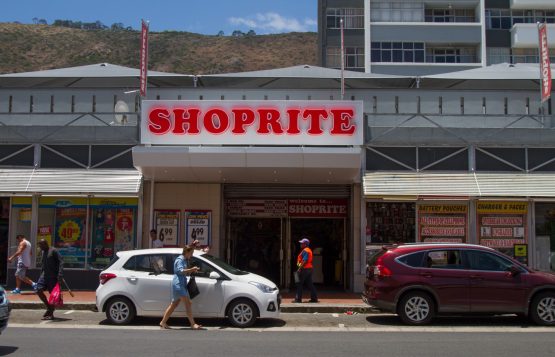Shoprite staring down a R1bn-plus annual diesel bill

Between July and December last year, the Shoprite Group spent an “additional” R560 million on diesel for generators, it says, “in order to trade uninterrupted during load shedding stages five and six”.
Load shedding reached a peak of Stage 5 on approximately 15 days and a peak of Stage 6 on 13 days during the second half of 2022. A peak of Stage 4 was implemented on 42 days in the six months.
So, maybe, R3 billion of that was in SA … And, say, somewhere between R2 billion and R2.5 billion of that was for electricity (the rest for water). Suddenly, that R560 million looks tear-inducing.
At Stage 6, power cuts can total as much as 12 hours in a 24-hour cycle. On days where Stage 6 is in place, stores could easily be without power for more than 50% (six hours) of the trading day. But the generators need to run overnight too to ensure fridges and freezers stay running.
This is why the costs are so astronomical – generator power will easily cost double what one would pay Eskom or a municipality.
The retailer, like many other businesses, has learnt to deal with these short, infrequent cuts in power. But, Engelbrecht pointed out, at “Stage 5 and up we run at R100 million a month” to run generators.
In November last year he said if there is 12 months of load shedding “it’s going to cost R1.2 billion … [and] there is nothing we can do about that”.
For context, the group’s trading profit for its SA supermarkets in the interim period in its 2022 financial year was R4.9 billion. This is equal to 11.5% of the prior comparable period’s trading profit.
Hitting profit
It is not a stretch to suggest that this additional cost will all but wipe out any increase in H1 profit on the back of 17.5% sales growth in South Africa.
Supposing profits grow roughly in line with sales, trading profit in SA should theoretically be R800 million to R850 million higher. But for this diesel bill. Oh, and the fact that it confirmed its gross margin will be “marginally lower” due to an investment in “selling prices to counter the impact of inflation for customers” and the “impact of the approximate 56% year-on-year increase in fuel price on our supply chain operations”.
A trading update in the next two weeks should show just how bad these knocks were.
The assumptions, at least among the commentariat on Twitter, are that a) the group will hike prices, forcing customers to cover this cost and b) it is somehow ignorant of photovoltaic solar.
Besides, it is locked in an almighty battle with Pick n Pay (and Boxer) across the lower income and mass market, as well as Woolworths among upper income consumers.
Any material increase in prices will knock its market share gains, which it says have been in place for an “uninterrupted” 46 months.
Solar rollout
As for the solar question … Shoprite is more often than not a tenant in shopping centres and malls. It cannot simply start erecting solar panels on the rooftop.
Generally, landlords have done that or are planning to. This will offset some electricity consumption for all tenants during the day, but the backup generators are still needed.
Even the most elaborate rooftop solar photovoltaic (PV) installation cannot power the full load in a shopping centre – the needs are simply too high.
In the group’s sustainability report, it highlights a case study of the Sitari Village Mall which is owned by the group.
Its 635kWp (kilowatt peak) rooftop solar can generate 35% of the centre’s energy needs. The rest is sourced from Eskom’s renewable energy tariff programme (where it ‘wheels’ wind energy across its grid to the centre).
Generators are important in balancing the load within a centre (and obviously when PV production isn’t at 100% due to cloud or rain). This means the group’s total diesel spend will include a sizeable proportion in generator power that is ‘billed through’ by landlords.
In the 2022 financial year, it consumed 54 138 megawatt hours (MWh) of renewable energy, an increase of 400% on the previous year. Around 43 000MWh of this was from rooftop solar.
Total electricity purchased from the grid was 1.8 million MWh.
Last year, it managed to achieve a contribution of 2.8% of total electricity consumption from solar PV (its target was 2.5%). The target this year is 5% and this forms part of its short-term bonus measure for senior executives.
Shoprite aims to power 25% of its operations with renewable energy over the next five years, primarily through a deal to procure 434 000MWh from a specialist energy trader (the ability to wheel this power across transmission grids remains a major challenge).
This ramp-up cannot come quickly enough, but with load shedding a near certainty for (at least) the next 24 months, that diesel bill isn’t going away.

